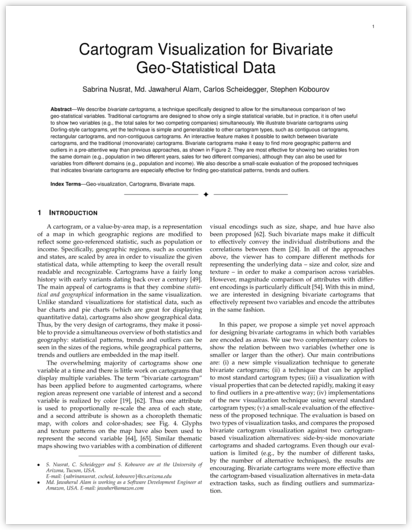Cartogram Visualization for Bivariate Geo-Statistical Data
Sabrina Nusrat, Md. Jawaherul Alam, Carlos Scheidegger, and Stephen Kobourov
We describe bivariate cartograms, a technique specifically designed to allow for the simultaneous comparison of two geo-statistical variables. Traditional cartograms are designed to show only a single statistical variable, but in practice, it is often useful to show two variables (e.g., the total sales for two competing companies) simultaneously. We illustrate bivariate cartograms using Dorling-style cartograms, yet the technique is simple and generalizable to other cartogram types, such as contiguous cartograms, rectangular cartograms, and non-contiguous cartograms.
Bivariate cartograms make it easy to find more geographic patterns and outliers in a pre-attentive way than previous approaches. They are most effective for showing two variables from the same domain (e.g., population in two different years, sales for two different companies), although they can also be used for variables from different domains (e.g., population and income). We also describe a small-scale evaluation of the proposed techniques that indicates bivariate cartograms are especially effective for finding geo-statistical patterns, trends and outliers.
Accepted to TVCG, to appear. pdf
